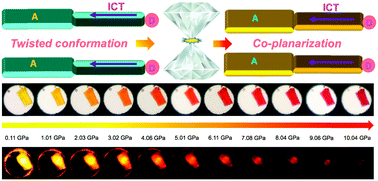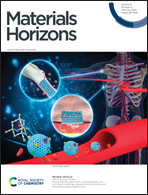A synergy between the push–pull electronic effect and twisted conformation for high-contrast mechanochromic AIEgens†
Abstract
Mechanochromic (MC) luminogens in response to external stimulus have shown promising applications as pressure sensors and memory devices. Meanwhile, research on their underlying mechanism is still in the initial stage. Here, three pyridinium-functionalized tetraphenylethylenes bearing n-pentyloxy, hydrogen and nitro groups, namely TPE-OP, TPE-H and TPE-NO, are designed to systematically investigate the influence of the push–pull electronic effect and molecular conformation on MC luminescence. Upon anisotropic grinding and isotropic hydrostatic compression, TPE-OP with strong intramolecular charge transfer (ICT) affords the best MC behavior among them. Analysis of three polymorphs of TPE-H clearly indicates that planarization of the molecular conformation plays an important role in their bathochromic shifts under mechanical stimuli. Theoretical calculations also verify that high twisting stress of AIEgens can be released under high pressure. This study presents a mechanistic insight into MC behaviour and an effective strategy to achieve high-contrast MC luminescence.



 Please wait while we load your content...
Please wait while we load your content...